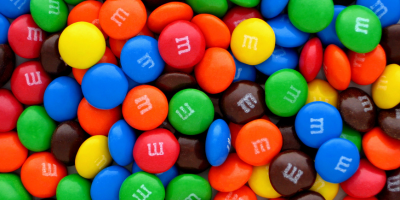July 09, 2025
Will a Food Dye Ban Make Your Favorite Treats Taste Different?

Imagine opening a pack of gummy bears and seeing dull beige and pastel blobs instead of the bold reds, greens, and blues you’re used to. Would they taste the same? That’s the big question on people’s minds as the conversation around banning artificial food dyes heats up.
In recent years, there’s been growing concern over the safety of artificial food colorings. Several dyes like
Red 40, Yellow 5, and Blue 1 are under scrutiny for their potential links to hyperactivity in children, allergic reactions, and even cancer in long-term animal studies. Europe has already placed strict regulations on many of these dyes, requiring warning labels or replacing them entirely. In the U.S., states like California are moving in the same direction, considering bans or heavy regulation on certain food dyes.
But here’s where it gets interesting. Most of us associate a food’s flavor with its color. Think about a lime-flavored candy. If it’s not green, would you still think it tastes like lime? Or if your favorite red velvet cake looked brown instead of its signature red hue, would it still feel as indulgent?
The truth is, color plays a big role in our perception of flavor. Studies show that people rate the taste of the same drink differently based solely on its color. In one experiment, researchers gave participants a lemon-flavored beverage dyed red. Many thought it was cherry or strawberry, even though the flavor never changed. So while a food dye ban wouldn’t
physically change how something tastes, it could trick your brain into thinking it has.

Now, what about the actual ingredients? Some natural food dyes come from sources like beet juice, spirulina, turmeric, or paprika extract. While these are safer and often preferred from a health standpoint, they can bring their own subtle flavors and may not be as vibrant or stable during baking or processing. That could mean your pink frosting might have a slight beet flavor or fade over time. Or your orange cheese might be a little less neon.
That said, food manufacturers are getting better at using
natural alternatives. Advances in food science have made it possible to mimic many artificial dye colors without adding strange flavors or sacrificing shelf life. It might take some getting used to, but it won’t ruin the snack experience. Plus, natural coloring might even introduce you to new versions of your favorite treats that are just as good, if not better.
Of course, there will be resistance. Some people feel that banning artificial dyes is government overreach or that it fixes something that wasn’t broken to begin with. Others argue that kids, in particular, shouldn’t be eating brightly colored cereals or candies packed with
synthetic chemicals just for visual appeal. It really depends on how much value you place on the color of your food versus what’s in it.
In the end, if a dye ban becomes widespread, your favorite foods might look different. But taste? That depends more on your brain than your tongue. You might miss the bright red candies or the golden cheese curls at first, but your palate will likely adjust quickly. Over time, what’s natural may become the new normal. And who knows? Your treats might even taste a little sweeter when you know what’s in them is safer for everyone.